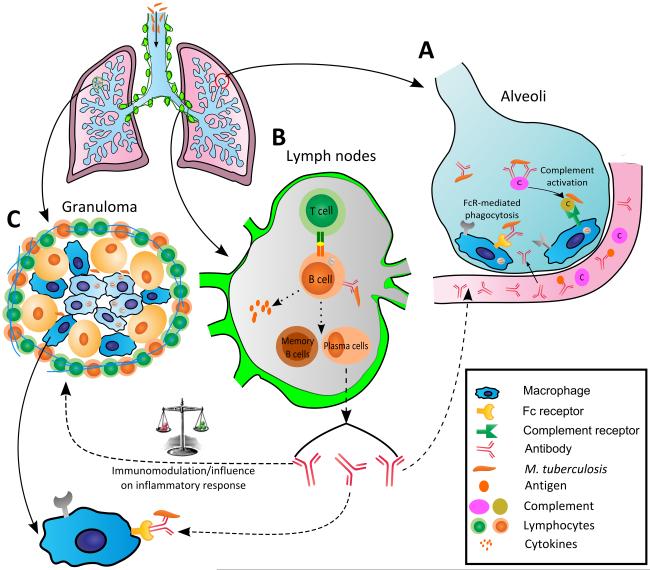Fig. 1.
Scheme showing the pathogenesis of tuberculosis and steps where antibody (Ab) and B cells could conceivably provide protection based on literature reports of B cell and Ab action against M. tuberculosis (Mtb) infection. A) Ab could potentially affect the outcome of infection in the alveolar space through opsonization, complement activation, and FcR-mediated enhanced Mtb phagocytosis and killing. Ab could contribute defense mechanisms at the alveolar level during the initial state of infection when inflammation would increase serum permeability and allow the transfer of Abs and complement into the alveolar space; B) B cells located at the germinal center of lymphoid organs could play a role in the defense against infection through i) their function as antigen presenting cells and activation of T cells, ii) production of cytokines that could influence the development of the T helper response, and iii) production of Abs which could modulate various aspects of the innate and adaptive immune response, and clear immunomodulatory Mtb antigens by forming immune complexes; and C) Influence of B cells and Ab on the Abs on the inflammatory response, FcR-mediated phagocytosis and killing of extracellular Mtb within the cavity. Ab could affect granuloma formation through its intrinsic pro- and anti-inflammatory effects. Formation of better organized granulomas in the presence of Ab could potentially translate into reduced dissemination and local control of infection.

